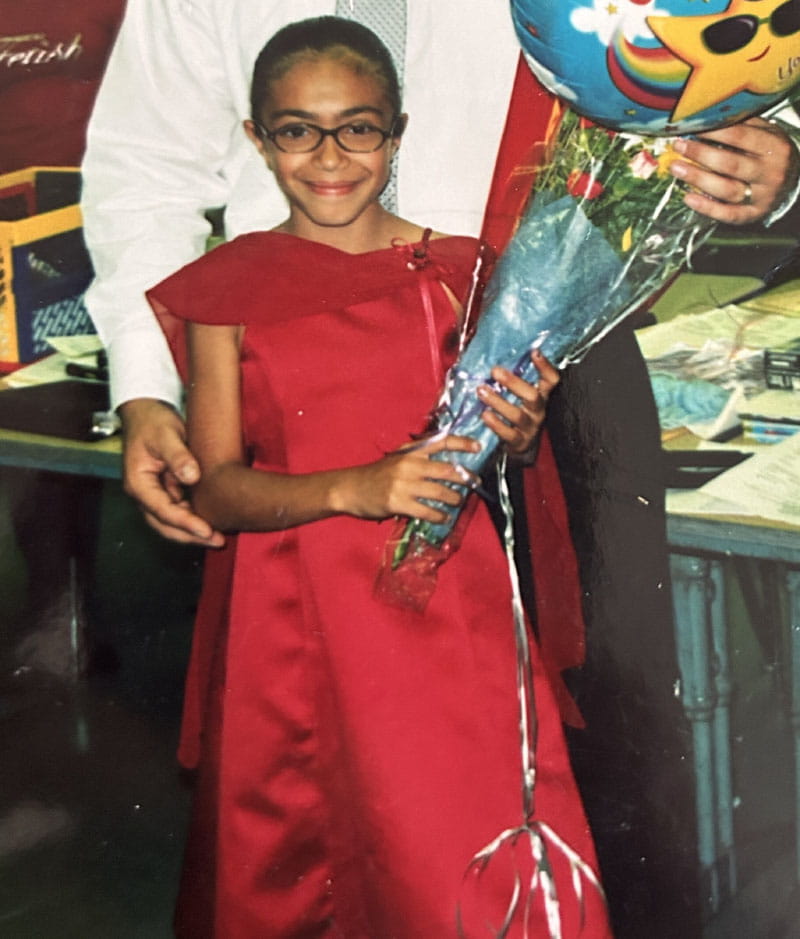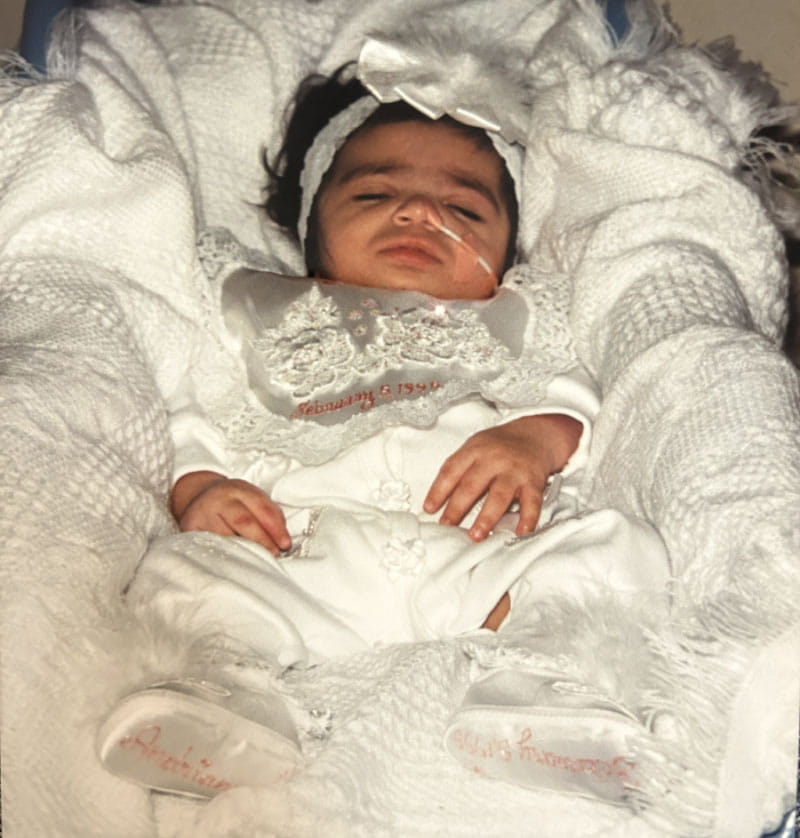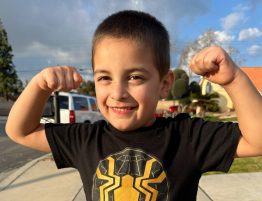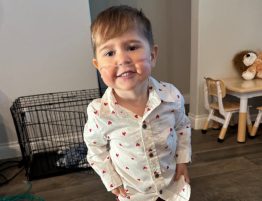
For as long as she can remember, Andrianna Acosta went out of her way to hide the 8-inch scar that stretches from near her collarbone down to her belly button. In most photos of her younger self, she’s wearing high-collared shirts, turtleneck tops and hoodies.
“Growing up, I was extremely insecure because of this scar that I had, because no one my age had that,” she said. “I didn’t even really know what it was.”
Born and raised in New York’s Long Island, Andrianna was about 7 months old when she had the lifesaving heart surgery that left the scar. She was born with a ventricular septal defect, a condition sometimes referred to as a hole in the heart. The opening in the wall that separates the heart’s two lower chambers disrupts normal blood flow to and from the lungs. What causes such a birth defect in babies is unknown.
Andrianna’s parents told her about the surgery when she was very young. But she couldn’t fully grasp the significance of it. All she thought about was the scar. She was about 10 when intense curiosity among her classmates made her self-conscious about it.
“What is that? Why do you have that?” they would ask, pointing to the tip of the scar on her collarbone.
“It was just hard,” Andrianna said. “It’s that age when kids start kind of picking on you, and you’re trying to find yourself. I used to write in my diary about how much I hated my body and how much I wished I could change my scar.”

She continued covering the scar into her early 20s – until the random afternoon when she was going through family photo albums with her mother.
Andrianna picked up a journal she had not noticed before. In it, her mom had kept meticulous entries of Andrianna’s health struggles as a newborn. It told a story of survival and determination.
There was a time when Marie and Eli Acosta weren’t sure if their second-youngest daughter would survive. There were no complications during childbirth, but soon after bringing her home, Marie noticed that Andrianna behaved differently than her 4-year-old sister, Ashley, had as a newborn. Andrianna would sleep long stretches without feeding, and started losing weight. Doctors initially told Marie that it probably wasn’t anything serious. A mother’s intuition made her sense otherwise.
Marie kept a watchful eye on her baby, noting her observations in the journal. Marie’s lingering memory is of “such a tiny little person having such a hard time breathing.”
“I remember racing to the hospital with her because her lips would turn blue, and I was like, ‘Oh, my goodness, you can’t die on me,'” Marie said.
She constantly shared her notes with doctors. Eventually, a cardiologist diagnosed the defect when Andrianna was 1 month old. She underwent the surgery to close the hole six months later.
“The way the doctor explained it to me was that a patch just stays there, and that skin just grows around it,” Marie said.

After reading the journal and talking with her mom, Andrianna’s perspective changed. What she once saw as a blemish was now infused with meaning.
“I realized that it’s so much more than a scar, so much more than a surgery,” she said. “It’s a whole story that my whole family was involved in. And it made me realize how much my family loved me and how much they would do for me.”
The timing of this newfound appreciation was interesting.
It was 2020, around the time she graduated from college and started a modeling career.
Andrianna was stunned by one presentation that edited the scar out of her image. “It’s like looking at a picture of yourself without something that is incredibly you,” she said.
It bothered her on so many levels that she set a new standard. She would collaborate only with photographers who respected her wishes to keep her scar visible in photos.
In 2021, Andrianna proudly displayed her scar as she won the Miss New Jersey International title. She used her pageant platform to spread awareness about the congenital heart defect in appearances at schools and community gatherings. Even after her reign ended, she continues to speak publicly about her scar.
“It has just been an incredible journey,” she said. “And I’m so excited to continue modeling and continue talking about my scarring – showing it off, really.”

Watching her daughter’s achievements after a rough start in life couldn’t make her mother feel more grateful – or proud. “She’s always been very determined,” Marie said. “No matter what she sets her mind to, she’s going to make sure she accomplishes it.”
Andrianna has had no further heart problems. Still, she gets an annual checkup to remain on the safe side.
Now 29, Andrianna said she is still in awe of what she went through as a baby. “It was almost like I was given a second chance at life – and I had no idea.”
Stories From the Heart chronicles the inspiring journeys of heart disease and stroke survivors, caregivers and advocates.







